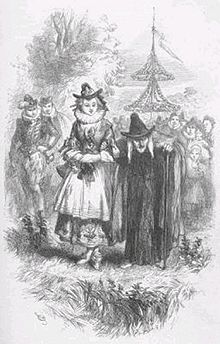Portal:Lancashire
The Lancashire Portal

Lancashire (/ˈlæŋkəʃər/ LAN-kə-shər, /-ʃɪər/ -sheer; abbreviated Lancs) is a ceremonial county in North West England. It is bordered by Cumbria to the north, North Yorkshire and West Yorkshire to the east, Greater Manchester and Merseyside to the south, and the Irish Sea to the west. The largest settlement is Blackpool, and Preston is the administrative centre.
The county has an area of 3,079 square kilometres (1,189 sq mi) and a population of 1,490,300. After Blackpool (149,070), the largest settlements are Blackburn (124,995) and the city of Preston (94,490); the city of Lancaster has a population of 52,655. For local government purposes, Lancashire comprises a non-metropolitan county, with twelve districts, and two unitary authority areas, Blackburn with Darwen and Blackpool. The county historically included northern Greater Manchester and Merseyside, the Furness and Cartmel peninsulas of Cumbria, and some of northern Cheshire, and excluded the eastern part of the Forest of Bowland. (Full article...)
Selected article -

The trials of the Pendle witches in 1612 are among the most famous witch trials in English history, and some of the best recorded of the 17th century. The twelve accused lived in the area surrounding Pendle Hill in Lancashire, and were charged with the murders of ten people by the use of witchcraft. All but two were tried at Lancaster Assizes on 18–19 August 1612, along with the Samlesbury witches and others, in a series of trials that have become known as the Lancashire witch trials. One was tried at York Assizes on 27 July 1612, and another died in prison. Of the eleven who went to trial – nine women and two men – ten were found guilty and executed by hanging; one was found not guilty.
The official publication of the proceedings by the clerk to the court, Thomas Potts, in his The Wonderfull Discoverie of Witches in the Countie of Lancaster, and the number of witches hanged together – nine at Lancaster and one at York – make the trials unusual for England at that time. It has been estimated that all the English witch trials between the early 15th and early 18th centuries resulted in fewer than 500 executions; this series of trials accounts for more than two per cent of that total. (Full article...)Topics
Related portals
Recognised content
Featured Articles:
![]() Blackburn Olympic F.C.,
Blackburn Olympic F.C., ![]() Pendle witches,
Pendle witches, ![]() Samlesbury witches
Samlesbury witches
Featured Lists:
![]() List of Nelson F.C. seasons,
List of Nelson F.C. seasons, ![]() Listed buildings in Rivington
Listed buildings in Rivington
Good Articles:
![]() 1920–21 Burnley F.C. season,
1920–21 Burnley F.C. season, ![]() 1922–23 Nelson F.C. season,
1922–23 Nelson F.C. season, ![]() East Lancashire Railway 1844–1859,
East Lancashire Railway 1844–1859, ![]() Henry of Grosmont, 1st Duke of Lancaster,
Henry of Grosmont, 1st Duke of Lancaster, ![]() Preston railway station,
Preston railway station, ![]() River Irwell,
River Irwell, ![]() Rivington,
Rivington, ![]() Stonyhurst College,
Stonyhurst College, ![]() Turf Moor,
Turf Moor, ![]() William Sudell
William Sudell
General images -
Did you know ...
- ... that Argleton (supposed location pictured) appears on Google Maps as a settlement in West Lancashire, England, even though no such place exists?
- ... that in 1920–21, Burnley were crowned champions of English football for the first time?
Subcategories
Cities map
WikiProjects
Associated Wikimedia
The following Wikimedia Foundation sister projects provide more on this subject:
-
Commons
Free media repository -
Wikibooks
Free textbooks and manuals -
Wikidata
Free knowledge base -
Wikinews
Free-content news -
Wikiquote
Collection of quotations -
Wikisource
Free-content library -
Wikiversity
Free learning tools -
Wikivoyage
Free travel guide -
Wiktionary
Dictionary and thesaurus







































